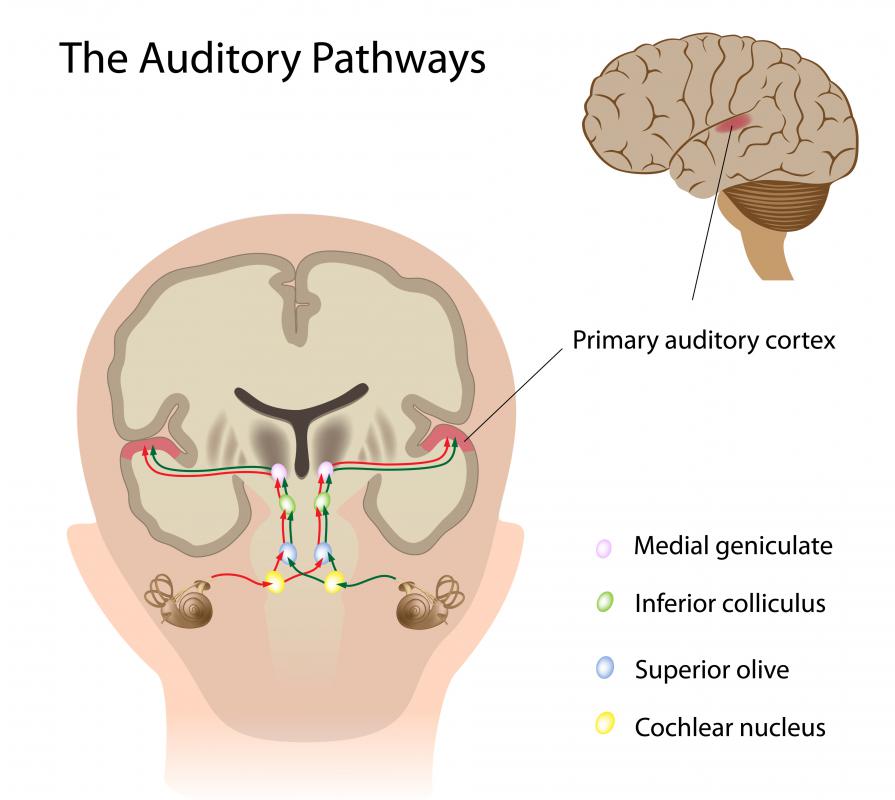At WiseGEEK, we're committed to delivering accurate, trustworthy information. Our expert-authored content is rigorously fact-checked and sourced from credible authorities. Discover how we uphold the highest standards in providing you with reliable knowledge.
What Are the Different Parts of the Midbrain?
The different areas of the human midbrain are generally responsible for unconscious reactions to external stimuli. Neural signals originating from many of the human senses, including vision, hearing and touch, are processed here. Motor control — the many muscles needed to create any bodily movement — is coordinated here. The semi-conscious high athletes can experience, including a heightened immediacy of alertness and precise physical response, comes from the many parts of the midbrain functioning in efficient synchronicity.
Anatomically and functionally, the human brain is sectioned into a forebrain, hindbrain, and midbrain. The latter area is near the center of the brain and mostly not visible except from an underside view. Medically, it is referred as the mesencephalon. Commonly, it is thought of as an enlargement and extension of the brainstem which is responsible for more basic autonomic functions such as heartbeat, respiration, and growth. Following the decision to sleep, it regulates the thin line between rest and arousal necessary for survival and growth.

The midbrain is the most advanced area of the brain. While humans have variably extra-large forebrains and hindbrains, all vertebrate animals with a central nervous system have this basic brain structure. Its general architecture, its organization of parts, is moreover the same, even in fossilized paleontological animals.
One of the more prominent parts of this area of the vertebrate brain is the tectum, or corpora quadrigemina, named for its quadrant structure. Each of the four lobes is called a colliculus. The main optic nerve bundles from each eye cross paths to opposite sides of the tectum. The upper, or superior, colliculi have been clinically proven to be responsible for saccadic eye movements, the rapid and miniscule vibration of eye muscles that enables perception of lines and forms. The lower, or inferior, pair of colliculi receives neural signals triggered by light energy,sound waves, and gravity registered by the ears and received by their respective trochlear nerves.

The cerebral peduncles, large bundlings of nerves on either side of the spinal cord, represent another significant area of the brain. They carry not only instructive efferent nerves such as the oculomotor neuron responsible for dilating and constricting the eyes’ pupils, but also afferent nerves from the body’s other sense organs. One of the most important neural signals is the sense of heat, registered in large part by temperature-sensitive nerves in the skin. The midbrain is responsible for processing this critical environmental data and issuing corrective measures, such as muscle shivering.

Much of the brain’s attempt to correct the body’s response to external stimuli is chemical, not the on or off switch of electrical signals. The hypothalamus and other glands of the brain secrete their catalytic chemicals into the substantia nigra, a blackened tissue at the core of the cerebral peduncles. One of these hormones is dopamine, known to influence addictions as well as such equally basic human natures of civilization as self-motivation and social habituation.
AS FEATURED ON:
AS FEATURED ON:















Discuss this Article
Post your comments